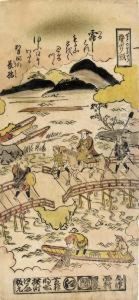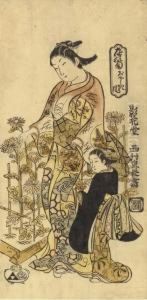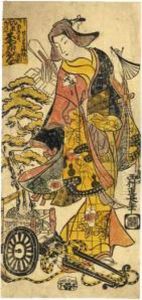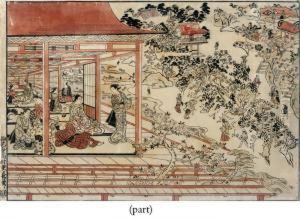Nishimura Shigenaga Paintings
Nishimura Shigenaga was a Japanese ukiyo-e artist, born in 1697 and passing away in 1756. He played a significant role in the Edo period's art scene, contributing to the development of the ukiyo-e genre, which depicted the 'floating world' of fleeting pleasures and beauty in urban Edo (modern-day Tokyo). Shigenaga is often credited with innovations that helped shift ukiyo-e art from its earlier emphasis on book illustrations and single-sheet prints of courtesans and actors to more diverse subjects, including landscapes and literary themes.
Shigenaga's career spanned a period of transition in the ukiyo-e genre. Early in his career, ukiyo-e prints were primarily monochromatic (sumizuri-e), but by the time of his death, the genre was on the cusp of embracing full-color printing (nishiki-e), a revolution in the art form that would be fully realized by his successors. Shigenaga himself was instrumental in this evolution, experimenting with limited color palettes (benizuri-e) that added vibrancy to prints without the full complexity and expense of nishiki-e.
Besides his artistic innovations, Shigenaga was also a mentor and leader in the ukiyo-e community. He headed a workshop that trained several important artists, including his adopted son Nishimura Shigenobu, who continued his father's legacy. Shigenaga's influence extended beyond his immediate circle; he is recognized for elevating the status of landscape in ukiyo-e, paving the way for later masters like Hiroshige and Hokusai, who would bring the genre to its zenith in the 19th century.
Shigenaga's works are characterized by their delicate lines, subtle use of color, and innovative compositions. While not as widely known today as some of his contemporaries or those he influenced, his contributions to the ukiyo-e genre were vital in its development. His legacy is preserved in collections worldwide, showcasing the breadth of subjects he covered and his role in the evolution of Japanese printmaking.




